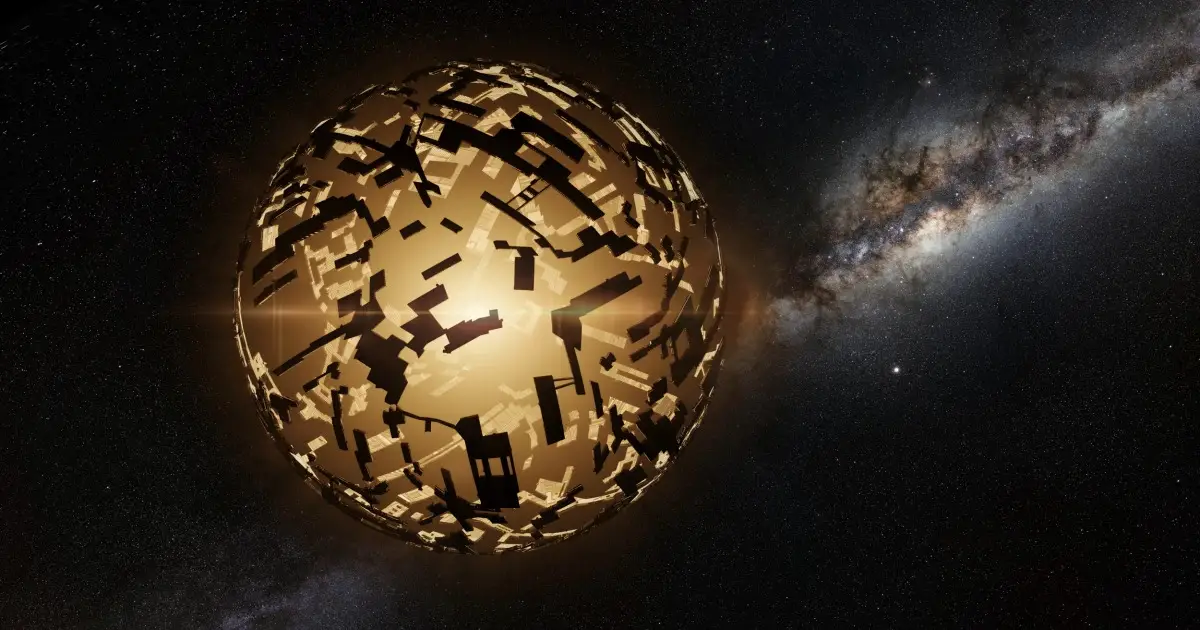In SYFY‘s Resident Alien, an extraterrestrial who goes by the name of Harry Vanderspiegle (Alan Tudyk) arrives on Earth, the sole representative of a sophisticated extraterrestrial species. While we have only scratched the surface of our technical capabilities, they have achieved faster-than-light interstellar travel.
One of our most significant constraints is our inability to properly collect and consume adequate energy. Transitioning from a planet-bound society to an interplanetary or intergalactic one will surely demand a lot of juice. The proportion of energy a technological society obtains from its parent star has been proposed as a measure of its advancement.
By constructing a massive megastructure around their star, or any other star they come across, advanced extraterrestrial cultures may be able to extract far more from it. Imagine a cloud of orbiting solar panels soaking up and converting starlight into power, and you’re almost there. Freeman Dyson proposed the idea in 1960, and these imagined extraterrestrial megastructures have borne his name ever since.
Dyson Spheres and Other Alien Megastructures
Alien engineers have various options for building their energy-gathering structures. On the bottom end of the spectrum, we are currently capturing solar energy inefficiently using fledgling solar cells. Our greatest solar panels collect just a small percentage of the sunlight that strikes them, and we don’t have many of them. With a few exceptions for spacecraft, we only gather sunlight that touches our planet, and then only in small amounts. On the opposite extreme, there is a Dyson Sphere, a hypothetical structure that completely encompasses a star, harnessing all of its energy production.

Dyson Rings and Dyson Swarms, rated at a 7 or 8, are less complex but still quite effective. These may absorb the energy of 20% or 30% of a star without completely hiding it. If somebody has built a starlight-scarfing megastructure, humans may be able to see it, making it a viable target for alien-hunting astronomers.
There is no such thing as a 100% efficient solar cell or energy capture system. Some of the starlight that hits the building will be collected as heat rather than energy. Even if the star were completely obscured by a Dyson Sphere, we could still view it by the infrared radiation it emits. A star encircled by a swarm or group of rings may display peculiar period dimming events as well as a unique infrared signature. In summary, if there are megastructures out there, we should be able to locate them.
Astronomers Find 7 Candidate Stars, Potentially Housing Alien Megastructures
In a study published in the Monthly Notices of the Royal Astronomical Society, astronomers searched for infrared excess emissions (IEEs) among the approximately 5 million Milky Way stars studied by the Two Micron All-Sky Survey (2MASS), NASA’s Wide-Field Infrared Survey Explorer (WISE), and the ESA’s Gaia mission.
Astronomers sought to explain each IEE they discovered using known mechanisms. A star surrounded by a cloud or disk of debris, such as the wreckage left behind from planets colliding in the early days of a planetary system, may emit comparable signals. After explaining everything they could, scientists were left with seven choices, all of which are red dwarf stars less than 1,000 light-years distant.
Of fact, there are very definitely more simple reasons for these seven stars’ excessive infrared fingerprints, but they provide a starting point in our search for alien technology and the extraterrestrials who created it. The next stages will be to investigate those stars with more powerful sensors, such as those on the JWST, and to seek for other biosignatures such as atmospheric carbon, oxygen, and chemicals that can only be created by life.




I simply could not go away your web site prior to suggesting that I really enjoyed the standard info a person supply on your guests Is going to be back incessantly to investigate crosscheck new posts